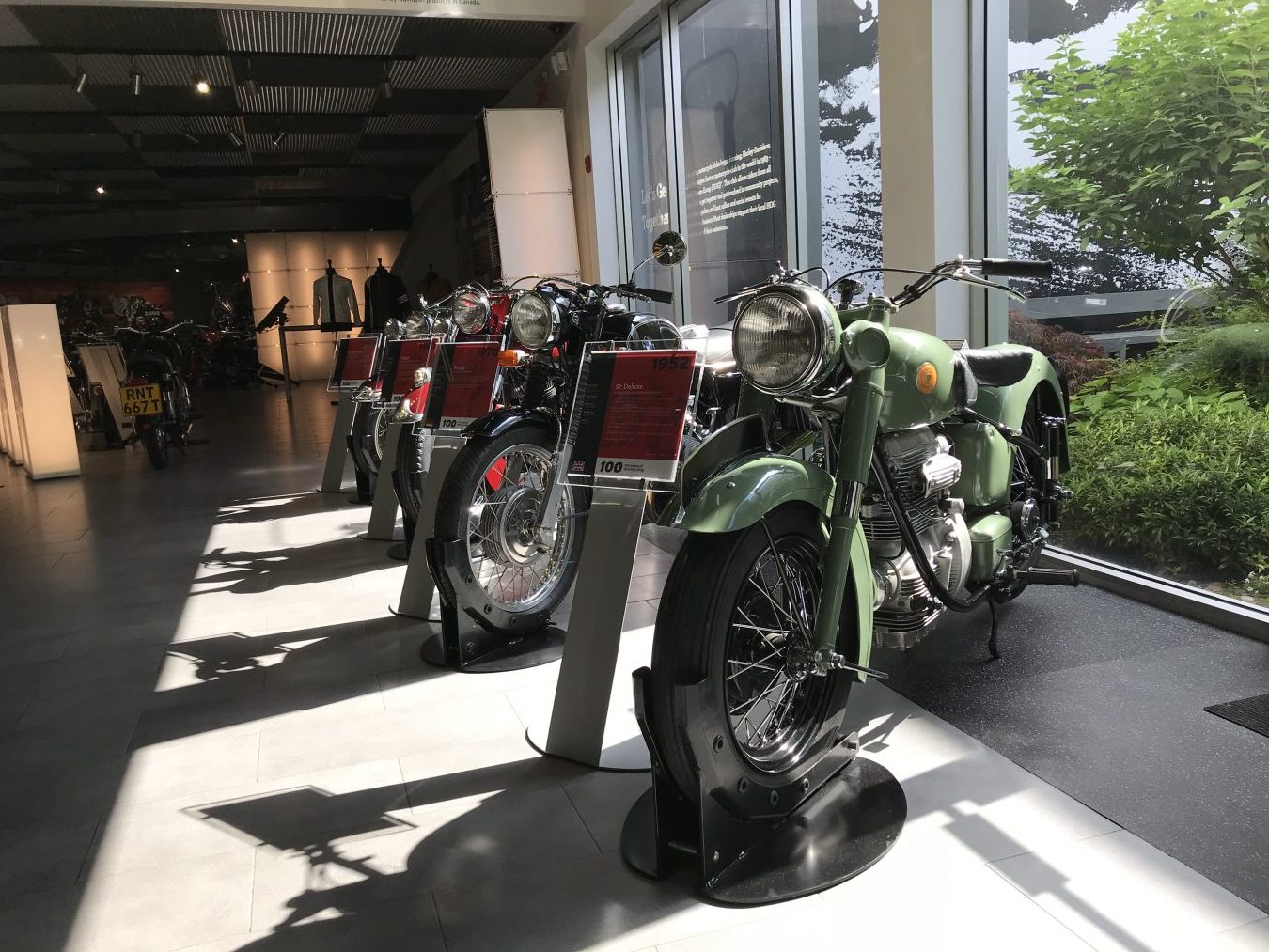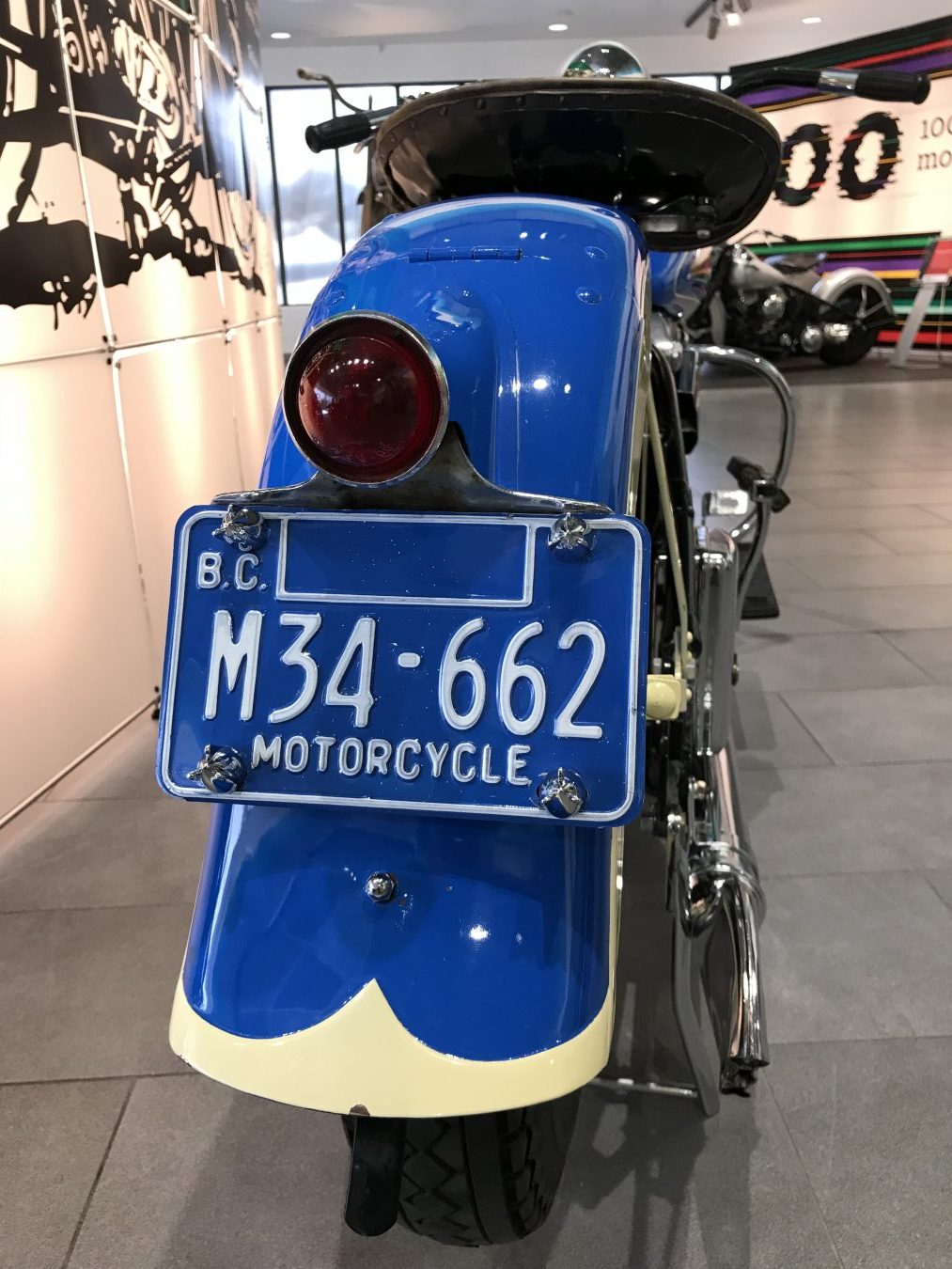Your first clue: the word “exhibition.” Located on the Vancouver side of Boundary Road, the Deeley Motorcycle Exhibition is not a museum. Nor is it a gallery, or a display. Rather, it’s a show: a place where enthusiasts and casual observers can marvel at the unique collection of two-wheeled, multi-horsepowered machines, and applaud the energy, excitement, and freedom implicit within them.
“I want [visitors] to appreciate the diversity of the bikes, the machines: their utilitarianism and their art,” says Brent Cooke, exhibition director. It only makes sense. After all, riding a motorcycle has never really been about the practicalities of getting from here to there. Rather, it’s about how getting from here to there makes you feel: joyful, carefree, content. For bikers, there is no real destination—the journey has always been an end in itself. “I love leaving home—and I love getting back,” says Cooke of his own motorbike experiences. “It’s the fun of the machine itself. They’re exhilarating to ride.”
Opened in 2007, the exhibition owes its existence to Malcom Hunter and Don James, partners in the Deeley motorcycle dealership that is housed next door. In one sense, the exhibition serves as a kind of business card for the attached retail space. But as Cooke explains, they are separate entities with separate staff, separate budgets, and, ultimately, separate missions: while the dealership wants you to buy motorcycles, the exhibition wants you to fall in love with them.
“I’m always trying to put a spin on what we can take away from our 260 bikes and roll them out in a different way, and not the same ones over and over again,” says Cooke. In the current exhibit, he charts 100 years of cycling history—an easy choice, given the dealership celebrated its first 100 years selling Harley Davidson motorcycles in 2017. The exhibit highlights more than 70 bikes from the total collection, and presents them from the early years of engineering experiments and novelty toys through to the titanium-framed superbikes of today.
Among the standouts: a one-of-a-kind replica of the original wooden-framed model built by Gottlieb Daimler; a hand-built, bespoke Brough Superior, similar to the one T. E. Lawrence (of Arabia fame) rode; a selection of bikes from the Second World War (both Axis and Allied); and an Italian MV Augusta made of titanium, carbon fibre, and Kevlar. “It’s not something you see very often,” Cooke says, gazing about at the various displays. “You don’t see this stuff anywhere anymore, and people appreciate that they can see it right up close—they can touch it.”
Walking up and down the rows of bikes, past the wall-sized backdrops that replicate the advertising graphics and slogans various manufacturers have used to entice buyers, visitors get a sense of what the show is really about: the evolution of the idea of a machine, how we perceive it, what it means to us, and how it can change from a mere tool to become a part of culture itself. “For me, that’s art,” Cooke muses, glancing at what may be the two most famous motorcycles in the world: precise replicas of the Captain America chopper and Billy Bike from the ‘60s counterculture classic Easy Rider. Both are set on a large, rotating dais that mimics the shape of a motorcycle wheel, but also functions as a kind of altar to everything the machines represent.
“It’s not just a noisy motorcycle with a weirdo with a hardhat on. It’s more than that,” says Cooke. “And when you get in there, and you start to appreciate what’s gone into making those machines, you start to kind of get it.” Call it art. Call it religion. At the very least, call it fascinating.
Read the latest in luxury Transportation.














